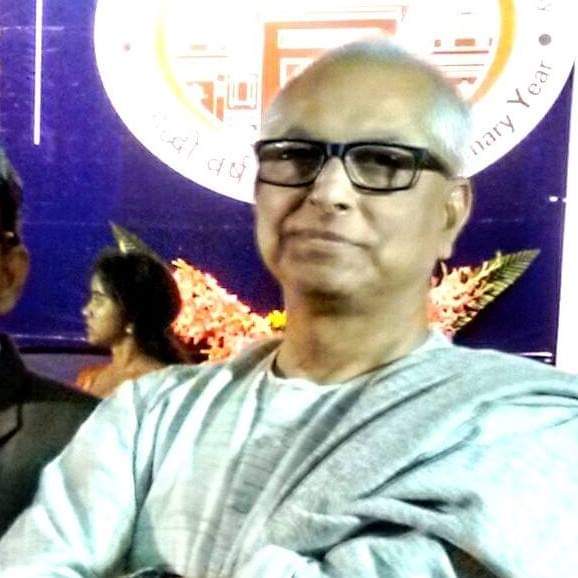
Dr. Viswanath Pandey
The recent controversy surrounding the water quality at the Maha Kumbh Mela in Prayagraj has sparked an intense debate. While Uttar Pradesh Chief Minister Yogi Adityanath has refuted allegations of water pollution, the National Green Tribunal (NGT) and Central Pollution Control Board (CPCB) have raised serious concerns about contamination, particularly due to high levels of faecal coliform bacteria. The issue has now taken a political turn, with the opposition accusing the government of mismanagement and the government dismissing these concerns as misinformation.
The CPCB report, submitted to the NGT, highlights that the water at Sangam, Prayagraj, where millions of devotees take a holy dip, contains excessive levels of faecal coliform bacteria. As per scientific standards, faecal coliform should not exceed 2,500 units per 100 ml of water. However, CPCB findings reveal that the levels far exceed this threshold at several locations, especially on Shahi Snan (royal bathing) days, when lakhs of pilgrims gather to take a ritual bath in the river.
Faecal coliform is a key indicator of sewage contamination. Its presence at high levels suggests that untreated sewage is entering the river system, raising serious health concerns for the millions of pilgrims attending the Kumbh. Exposure to such contaminated water can cause diarrheal diseases, infections, and other serious health hazards.
The NGT, in its stern remarks to the Uttar Pradesh Pollution Control Board (UPPCB), stated, “You made 500 million people bathe in polluted sewage water.” The tribunal directed the UPPCB to take immediate corrective measures and submit an action-taken report on water purification efforts.
Chief Minister Yogi Adityanath has strongly refuted the pollution claims, accusing critics of spreading misinformation. In his assembly speech, he declared: “Those spreading misinformation about Kumbh are causing damage to themselves. People are not ready to accept their misinformation.” He further emphasized that all top leaders from across the country and the world have taken a dip in the Kumbh waters, proving its cleanliness.
Adityanath also assured that the UP Pollution Control Board (UPPCB) is continuously monitoring water quality and that necessary steps have been taken to maintain cleanliness. He termed the allegations against his government as a politically motivated attempt to tarnish the sanctity of the Maha Kumbh Mela, calling it a matter of spiritual satisfaction (Santushtikaran) rather than appeasement (Tushtikaran).
The core question is whether these alarming findings are a scientifically validated environmental concern or merely an attempt to discredit the ruling government by the opposition.
1. Who Conducted the Water Quality Tests? The CPCB and NGT are independent government institutions tasked with environmental regulation and pollution control. These organizations do not operate under any political party’s directive and are expected to provide unbiased reports. If the CPCB has found contamination, it is based on scientific testing and empirical data, not political motivation.
2. Opposition’s Role in the Controversy The opposition parties, particularly the Congress and Samajwadi Party, have amplified these findings, accusing the UP government of gross mismanagement and negligence. They argue that despite spending thousands of crores on river-cleaning projects like Namami Gange, the government has failed to ensure clean water for pilgrims. While it is true that opposition parties are using the issue for political mileage, the data itself originates from government-backed scientific institutions, not opposition propaganda.
3. Government’s Responsibility and the Need for Transparency Instead of outrightly dismissing the CPCB report, the government should take it as constructive criticism and act to rectify the situation. The ruling party has invested heavily in river-cleaning initiatives and should use this opportunity to reinforce its commitment to environmental sustainability.
Is the Ganga Really Clean?
The pollution of the Ganga and Yamuna is a long-standing problem. The central and state governments have launched multiple projects to clean these rivers, but ground reports suggest limited success. According to CPCB’s 2023 water quality report, several parts of the Ganga still contain high Biochemical Oxygen Demand (BOD) levels, indicating poor water quality. Despite the Namami Gange mission’s efforts, sewage treatment plants (STPs) remain inadequate, and untreated waste continues to flow into the river.
The Maha Kumbh Mela, being a massive gathering, exacerbates these pre-existing pollution levels. The failure to adequately treat and manage sewage waste in time for this event raises serious governance questions.
What Needs to Be Done?
1. Improved Sewage Treatment Infrastructure: The UP government must rapidly upgrade and expand STPs to ensure that untreated sewage does not enter the river.
2. Strict Monitoring and Transparency: The UPPCB should publicly disclose real-time water quality data to maintain transparency and assure citizens that corrective measures are being taken.
3. Scientific Approach Over Political Rhetoric: Rather than treating this issue as a political attack, the government should engage with scientific bodies to implement long-term solutions.
The debate over the Maha Kumbh’s water quality should not be reduced to a political tug-of-war. The findings of CPCB and NGT are scientific in nature, and dismissing them entirely is counterproductive. While opposition parties are indeed leveraging the issue politically, the government must prioritize public health and environmental safety over political narratives.
If Yogi Adityanath’s government genuinely believes in clean river initiatives, then instead of dismissing concerns as “misinformation,” it should use the CPCB’s report as an opportunity to address pollution issues effectively. Ensuring safe and clean water for pilgrims should not be a matter of political debate but a fundamental governance responsibility.
The NGT’s concerns cannot be ignored. With over 500 million pilgrims participating, it is imperative to ensure that religious faith does not come at the cost of public health. The government’s response in the coming weeks will determine whether it prioritizes scientific accountability or political rhetoric in handling this crisis.
(Writer, a Ph.D. in Sociology, is a well-recognised author and columnist. For past over three decades, he has served in various administrative and academic capacities at Banaras Hindu University. He can be reached at pandeyvnp@gmail.com)


